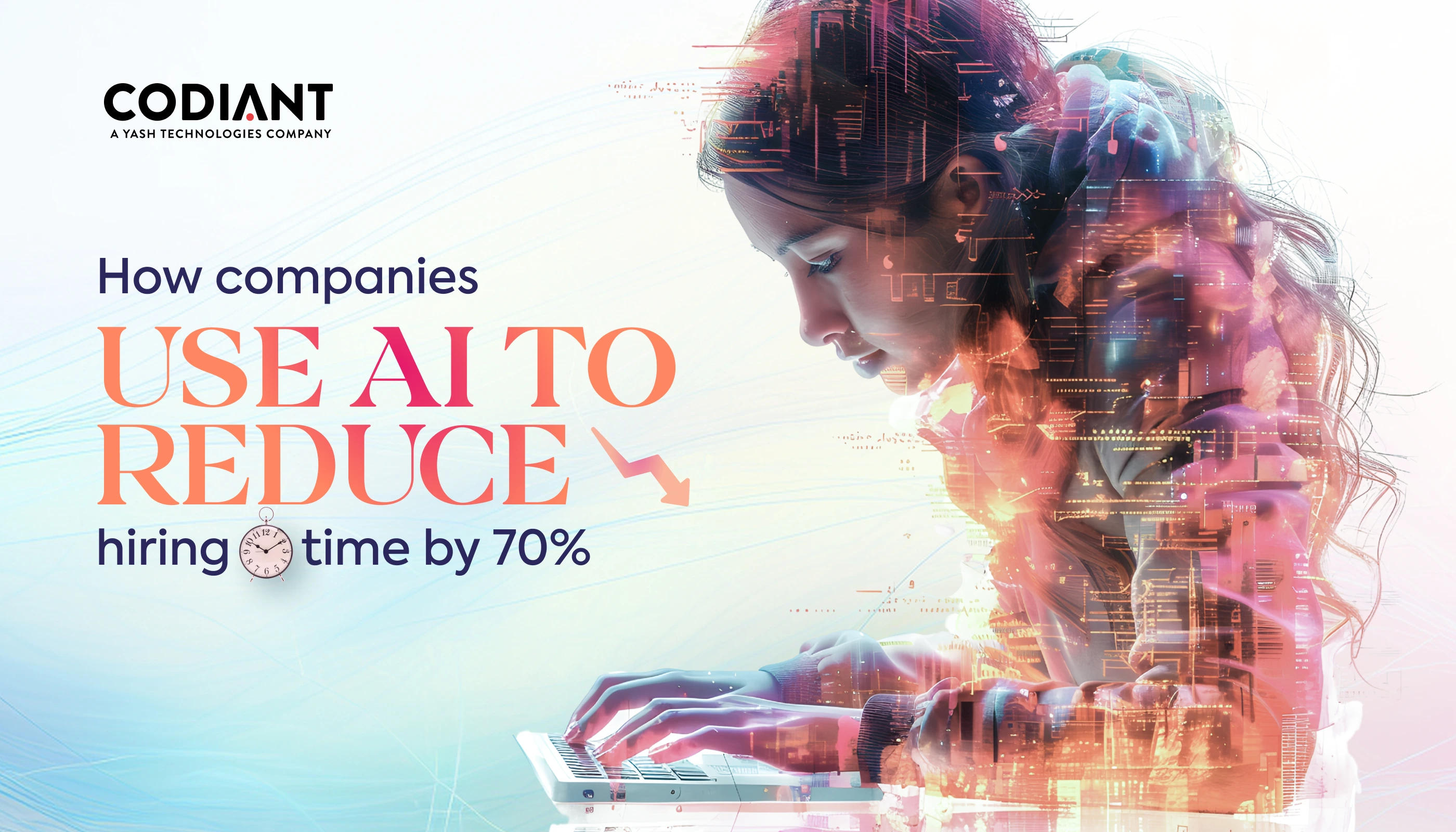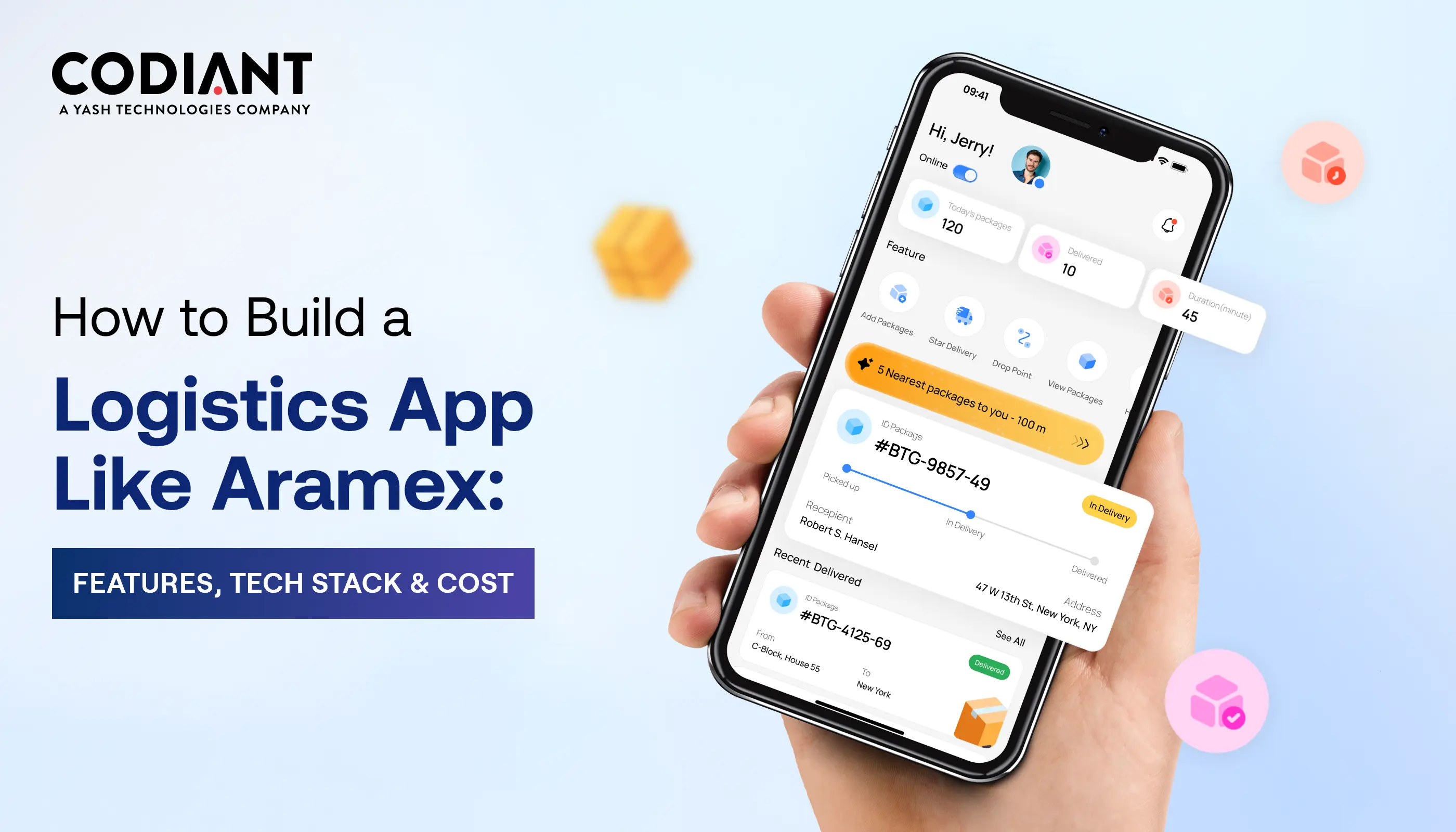How to Use AI for UX Design Process
Table of Contents
Subscribe To Our Newsletter

The integration of Artificial Intelligence into the UX design process has unlocked opportunities for designers to make data-driven decisions and deliver design projects swiftly.
AI is bundled with a variety of design tools and techniques that help enhance digital product experiences and boost the overall UX design strategy.
“A recent survey by Adobe found that more than 60% of UX designers already using AI to automate repetitive tasks and improve productivity.”
This statistic shows that AI is impacting the UX design process positively and helping designers improve overall user experience.
Let’s dive deeper into how AI can be leveraged at different stages of the UX design strategy, from research and prototyping to testing and iteration, to create more effective and satisfying user experiences.
The Role of AI in UX Design
AI has revolutionized the way of approaching UX design. Artificial Intelligence in UX and UI design has the ability to process and analyze large amounts of data like browsing habits, interactions, and preferences.
Further, AI can predict and automate complex tasks while doing UX design. AI can help designers with various aspects of the design process. This includes-
- Research
- Prototyping
- Testing
- Personalization
Pinterest is the best example of understanding AI-driven content discovery and AI for UX design process.
Pinterest uses artificial intelligence in UX and UI design to analyze users’ interests, preferences, and interactions on the platform. The strategy of using AI for UX design helps create a feed of content that matches each user’s interests. This motivates users and increases engagement and time spent on the platform with ideas, features, and touchpoints.
Why AI in UX Design?
AI in UX revolutionizes the way users interact with digital products. Its integration enables a personalized and seamless user experience.
AI-driven chatbots and virtual assistants provide immediate and efficient customer support, enhancing user satisfaction. Predictive analytics and recommendation engines anticipate user needs, which helps streamline navigation and content delivery.
Further, AI-driven A/B testing empowers designers to make data-informed decisions for continuous improvement. With AI’s ability to process vast datasets, it optimizes accessibility and usability and caters to diverse user demographics of UX design strategy.
Data-Driven Design
AI can provide valuable insights from user data, helping designers make informed decisions and create user-centric designs.
Personalization
AI can enable highly personalized user experiences, increasing user engagement and satisfaction.
Enhanced Testing
AI can facilitate more comprehensive and accurate usability testing, improving the overall quality of the design.
Efficiency
AI can systematize time-consuming tasks like data analysis and user testing. It allows designers to focus on creative aspects and UX design strategy of their work.
Competitive Advantage
Organizations that leverage AI for UX design process can gain a competitive edge by delivering superior user experiences.
Steps to Use AI in UX Design Process
AI for UX design process is a journey with various stages. Let’s look at how AI can be a companion in each of the stages of UX design strategy.

1. Research & User Insights
Understanding your users is the first step in UX design. AI can help in these ways:
AI-Powered Surveys
Instead of manually analyzing tons of survey responses, a UX strategy with AI can do it suddenly. It can understand what users like and don’t like.
Social Media and Sentiment Analysis
AI can go through social media and tell you what people are saying about your product. Are they happy or upset? This can guide your design.
User Behavior Analytics
AI tools can watch how users interact with your app or website. It can tell you where users struggle or where they spend the most time.
2. User Persona & User Journey Mapping
Creating user personas helps you understand who your users are. AI can assist here:
AI-Generated User Personas
AI can use the data you collected to create user personas automatically. This saves you time and keeps your personas up to date.
Predictive User Journey Analysis
With AI, you can predict how users will navigate your product. This helps you make their journey
3. Information Architecture & Content Strategy
This stage is about organizing your content and making it easy to find. AI can pitch in like this:
Content Recommendations
AI can suggest content to users based on what they’ve seen or liked before. It’s like having a personal tour guide in a museum.
Automated Information Hierarchies
AI can help structure your information in the most logical way, so users can find what they need without getting lost.
4. Wireframing & Prototyping
This is where you start drawing your ideas on paper. AI can speed things up:
Automated Prototyping
AI tools can create prototype designs based on your ideas and guidelines. It’s like having a design assistant.
Design Generative Tools
AI can make different design options for you. You can pick the one you like best. It’s like having an art assistant that can paint in different styles.
5. Usability Testing & Feedback Analysis
At this stage, you let users try your design and see if it works well. AI can help by:
Automated Usability Testing
AI can simulate user interactions and tell you what’s working and what’s not. This speeds up testing.
AI-Powered Heatmaps and Eye-Tracking
AI can show you where users are looking and clicking. It’s like having an X-ray vision for your design.
6. Personalization & Recommendation Engines
Personalization makes your product feel like it was made just for the user. AI can do this:
AI-Driven Personalization
AI can change what users see based on their past interactions. It’s like having a personal shopper who always knows your taste.
Recommendation Systems
Do you know how Netflix recommends movies you might like? AI does that. It’s like having a movie buddy who knows your favorite genres.
7. Iterative Design & A/B Testing
This is where you keep making your design better. AI can be a great helper:
AI-Based A/B Testing
AI can test different versions of your design with real users. It can even adjust things on the fly to find what works best. It’s like having a magician’s hat full of tricks.
Continuous Improvement with AI
The AI looks at your UX design strategy and tells you how to improve it. It’s like having a coach who helps you improve your game.
Challenges & Ethical Considerations
While AI is a fantastic companion in UX design, it’s not without its challenges:

Bias and Fairness
AI can learn from biased data and make unfair decisions. It’s like learning from a teacher who teaches the wrong things. Hence, you should be cautious while choosing these biases.
Privacy Concerns
While using artificial design in UX and UI design, AI can collect a lot of data about users. This is why, companies should follow strict protocols to protect the privacy of people.
Transparency and Accountability
Sometimes, AI decisions can be a bit like magic – we’re not sure how they happened. We need to make AI explain its decisions, so it’s not a mysterious black box.
In addition to this, artificial intelligence in UX and UI design process comes with several advancements now. It will continue to be embraced in the future too.
The Future of AI in UX Design
The future of artificial intelligence for UX design is poised to bring significant advancements, and in particular, reshape how we create digital experiences.
The future of AI for UX design process promises to create digital experiences that are personalized, efficient, and emotionally inclusive, but with the responsibility of meeting the ethical and social implications.
Hyper-Personalization
With too many people involved AI will become increasingly adept at understanding individual user preferences and behaviors, enabling hyper-personalized user experiences. Designers can create interfaces that change in real time, serving features and objects tailored to each user’s unique needs.
Theory Building Forecasts
AI algorithms will predict design trends and user preferences, helping designers stay ahead of the curve. It’s a predictive approach to streamline the UX designing process and ensure production remains on track.
Moral Consideration
Artificial Intelligence plays a larger role in policy, ethical concerns about data privacy, impartiality, and transparency will become more pronounced. The industry needs to develop stricter guidelines and standards to address these issues.
Effective Collaboration
Made UX strategy with AI. AI will act as a design partner, helping artists generate creative ideas, automating routine tasks, and providing data-driven insights. This collaboration will increase efficiency and creativity in the design process.
AR/VR
AI will play a key role in AR and VR based UX design. It enables realistic simulation, gesture recognition, and dynamic content customization in a virtual environment.
Emotional Intelligence
AI for UX design process will be better used to recognize and respond to user emotions. AI uses emotional intelligence to design systems that can empathize with users and help them in a human-like manner.
In A Nutshell
AI is a powerful ally in the UX design process, offering efficiency, data-driven insights, personalization, and enhanced testing.
However, it is essential to address challenges related to bias, privacy, and transparency to ensure ethical and responsible design.
By embracing AI and integrating it thoughtfully into the UX design process, designers can create experiences that not only meet but exceed user expectations.
It is more convenient to collaborate with UI/UX development company, that works on the latest tools and artificial intelligence technology to produce eye-catching design outcomes. This helps in transforming your digital experiences into a live experience.
Featured Blogs
Read our thoughts and insights on the latest tech and business trends
How to Integrate AI in Recruitment and Cut Hiring Time by 70%
- November 13, 2025
- Artificial Intelligence
Recruiting teams face a clear operational challenge: too much manual work and not enough qualified talent reaching the finish line. Even with modern ATS systems, most hiring workflows still depend on human-driven screening, coordination, and... Read more
How to Build AI Agents That Can Speed Up Your Work and Reduce Other Expenses
- November 10, 2025
- Artificial Intelligence
Businesses today are looking for faster ways to work and smarter tools that cut costs. That’s why AI agents are quickly becoming a key investment for companies of all sizes. These autonomous systems can perform... Read more
How to Build a Logistics and Transportation App Like Aramex?
- November 6, 2025
- Logistics & Transportation
In a Nutshell: A logistics app like Aramex helps businesses manage deliveries, track shipments, and serve customers better. Technology is now needed in logistics because customers want fast delivery and real-time tracking. A logistics app... Read more




